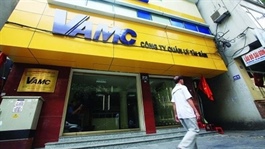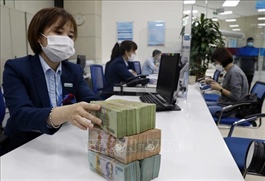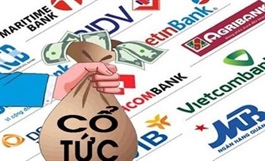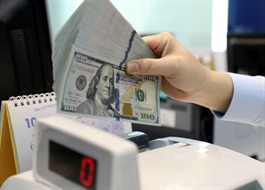Outlook for Vietnam’s interest and exchange rates remains cautious
Outlook for Vietnam’s interest and exchange rates remains cautious
Economist Le Xuan Nghia provides an in-depth look at the factors shaping Vietnam’s interest and exchange rate trends as 2025 draws to a close.
|
What macroeconomic factors are influencing interest rate trends in the final months of 2025?
Credit growth has been rebounding in recent months, mainly driven by the increased demand for capital to fund production and business activities during the year-end peak season. This is the period when companies in trade, import–export, consumer goods manufacturing, and services ramp up operations to meet upcoming burgeoning market demands on holiday and Lunar New Year occasions, leading to higher needs for working capital.
Credit demand in the real estate sector has also started to recover. After a prolonged slump, lending rates have dropped significantly, many legal obstructions have been cleared, and investor sentiment has gradually improved.
Developers now need funding to restart projects, while homebuyers are taking advantage of low interest rates to access loans.
Moreover, medium- and long-term capital flows into real estate have a spillover effect on other sectors such as construction, materials, and interior furnishings, generating positive momentum for the broader economy.
As credit demand rises, some banks are becoming concerned about year-end liquidity. To prepare, they have increased deposit mobilisation, pushing deposit rates slightly upward. This is not unusual, as credit growth in the second half of the year is typically double that of the first half.
With deposit rates climbing, can lending rates stay low, and is there still space for cuts to drive investment and demand?
Deposit growth has slowed as corporate deposits have fallen due to businesses needing capital for their seasonal year-end operations. Meanwhile, household deposits have also declined as individuals turn to alternative investment channels such as gold and, especially, the stock market.
From early 2025 through September, foreign investors recorded a net sell-off of a record VND102 trillion ($4.08 billion), yet the stock index still rose – indicating that domestic investors are heavily active in the market.
This situation has led to a gap between mobilised funds and outstanding loans. However, any increase in deposit or lending rates is likely to occur mainly at smaller banks, which need to bolster liquidity to support year-end lending.
Expecting rates to fall further to spur production and consumption is unrealistic, as faster growth naturally drives interest rates upward – a normal economic rule.
Lowering rates could stimulate demand, yet it is difficult to execute this in practice. At the same time, demand for capital is rising across various channels, including government bond issuance, where commercial banks remain the main buyers.
Since government bonds are also counted as part of total credit outstanding, the overall trend cannot defy the principle that when credit expands, the interest rate floor cannot fall much further.
Inflationary and money supply pressures are currently not particularly severe. Credit growth mainly comes from deposits within the banking system. Consequently, any increase in corporate lending rates would be marginal – about 0.1 or 0.2 percentage points – posing little pressure. Notably, the non-performing loan coverage ratio has declined, which also signals rising credit activity, as banks allocate more funds to lending and less to risk provisioning.
How will year-end exchange rate movements influence interest rates?
The exchange rate may face mild upward pressure towards year-end, mainly due to developments in the United States. Although the Federal Reserve is likely to cut interest rates – which would weaken the US dollar – Vietnam’s trade surplus with the US is expected to narrow. This creates both supportive and opposing forces on the exchange rate.
On one hand, a weaker USD helps ease pressure on the VND/USD rate. On the other, a smaller trade surplus could negatively affect Vietnam’s current and overall balance of payments, thereby exerting upward pressure on the exchange rate.
In reality, even though the USD has depreciated nearly 10 per cent since the start of the year, the VND/USD rate has remained high and has even ticked up at times.
When the exchange rate rises, imports become more expensive, raising the risk of imported inflation.
In this context, the State Bank of Vietnam has two main policy options: either raise interest rates to relieve exchange rate pressure, or sell foreign currency to stabilise USD supply and demand. Regardless of the approach, exchange rate fluctuations are certain to place some upward pressure on domestic interest rates in the final months of the year.
Amid potential interest rate fluctuations at year-end, how can businesses and borrowers best prepare their financial plans?
What businesses need to pay attention to are emerging external risks, particularly the growing impact of US tariff policies, which will become more evident in the fourth quarter of this year and into 2026.
The US-China trade war could disrupt global supply chains and reignite inflationary pressures. Exporters to the US, especially in the garments and textiles sector, may face heightened competitive pressure if tariffs on Vietnamese goods are higher than those imposed on regional competitors. Even a few percentage points’ difference could be enough to shift orders elsewhere.
At the macro level, Vietnam’s trade surplus with the US is currently very high – around $120 billion, equivalent to roughly 25 per cent of GDP. Therefore, any slowdown in exports to the US would inevitably weigh on Vietnam’s economic growth. The trade and balance-of-payments positions could come under strain, creating upward pressure on the exchange rate.
In this context, businesses should proactively prepare to respond, diversify their markets, reduce dependence on a few major destinations, and develop more flexible financial strategies amid a global environment where interest rates, exchange rates, and trade dynamics remain highly volatile.
- 17:03 24/10/2025

























